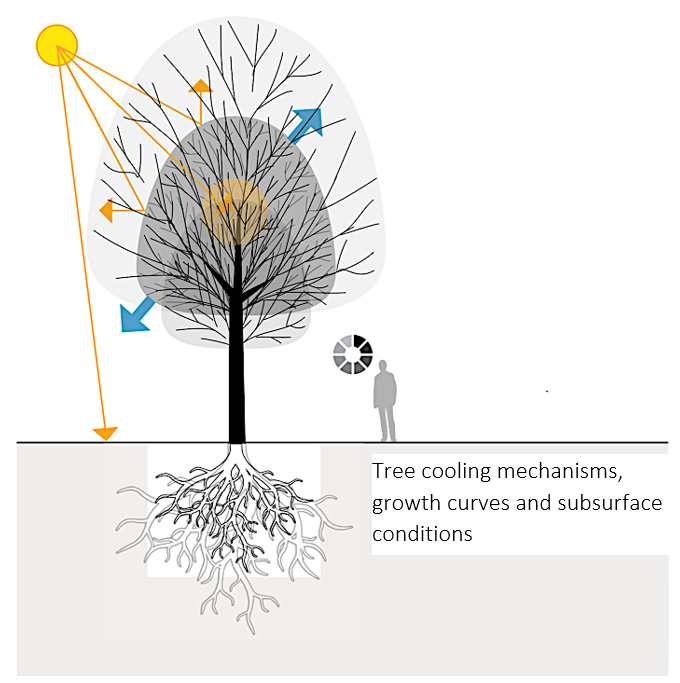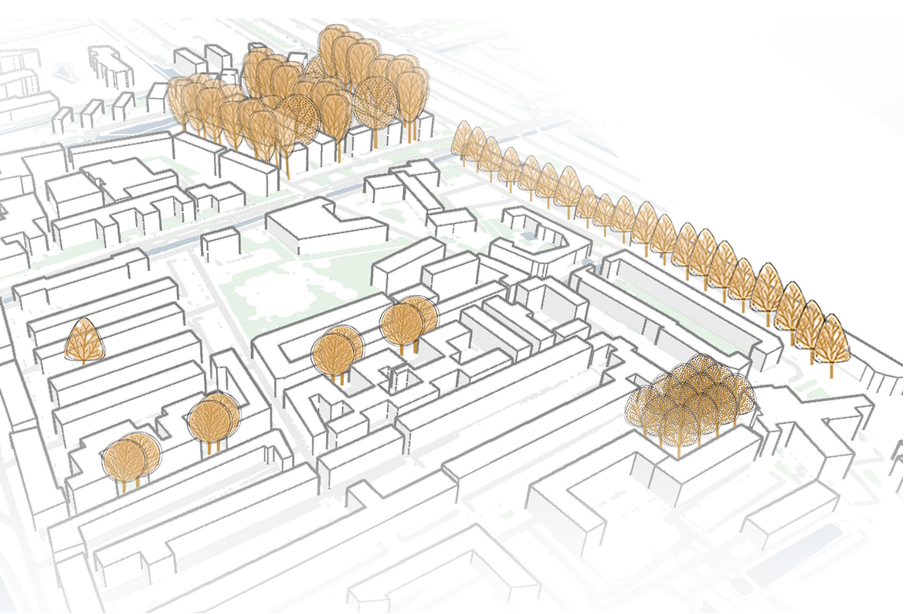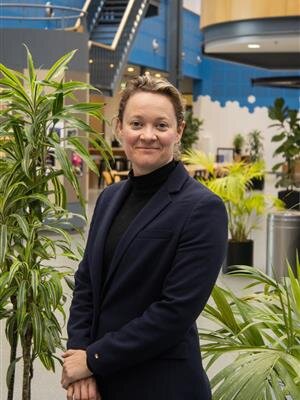i-Tree 2.0-NL: urban trees for bio-resilient cities
In the midst of a heatwave, the urban jungle is not the place you want to be. Stifling high temperatures, exacerbated by the heat island phenomenon, are not only unpleasant, they are a silent killer, with the elderly and frail particularly vulnerable. That’s why urban heatwaves are increasingly the subject of scientific research. Last year it was a topic for IDE masters students Josef Kesisoglou and Noemi Fuente in a collaboration with the Red Cross, instigated by IDE’s Jeroen van Erp and Rebecca Price. Now it will be the subject of a three-year long €800,000 project funded by CLICKNL and a consortium of 28 partners, i-Tree 2.0 NL. The research will be led by IDE’s, Rebecca Price and René van der Velde from the Faculty of Architecture and the Built Environment and aims to sow the seed of urban forestry as a means to helping build more climate- and bio-resilient cities.
Cooling performance of urban trees in software and orgware
Trees are widely accepted as natural ‘aircon’ for our cities, but precise data on how much they cool - and in particular over their life cycle - is lacking. In the project i-Tree 2.0-NL, accurate metrics for urban trees in Dutch cities will be developed and translated into databases, application software and ‘orgware’ – intended to increase the use of urban trees.
Green space, and urban trees in particular, are one of the most effective ways to make cities climate-adaptative. Trees are able to effectively reduce extremes of urban heat cycles. But more than this, the urban forest provides benefits for urban water management, air quality, biodiversity, and the health and well-being of residents. The fact that trees can be integrated in most places in the city means that they can also play a central role in the resilience of urban communities to climate change. But despite these opportunities, and a long tradition of urban forestry in Dutch cities, the role of urban trees in climate adaptation remains limited.
i-Tree 2.0-NL project
Green space managers, policy makers and designers need accurate data and tools to monitor and model the benefits of urban trees in relation to heat cycles and urban microclimates. This applies to both baseline performances of different tree species, as well as performance over the life of a tree. A central concept in understanding this performance is tree architecture - a knowledge domain in the Urban Forestry research fellowship at the Faculty of Architecture. Physical characteristics of a tree such as crown morphology, wood anatomy and leaf characteristics determine how and to what extent a tree cools its environment, and how this helps thermal comfort. These metrics can be supplemented by data on the transpiration rate of different tree species, which further help a tree’s cooling capacity through evaporative cooling. If this performance is then calculated over the life cycle of the tree, we can finally get a full picture of the thermal benefits of the urban forest.
The i-Tree 2.0-NL project will develop accurate metrics on the optimal cooling performance of hundreds of tree species grown in Dutch cities. Data will be integrated into an existing tool, i-Tree, which will be further developed so that it is capable of making assertions about the degree to which urban trees can help reduce heat in Dutch cities.
Orgware
The development of accurate data within the i-Tree tool means that planners, designers and green space professionals will be better able to shape and manage urban green spaces for climate adaptation. But the success of the tool does not rest solely on the data, it must also be usable and applicable. New applications of i-Tree will be developed via design simulations and co-design with stakeholders.
The possible performance benefits of i-Tree alone won’t guarantee adoption and subsequent impact. Understanding and connecting an ecosystem of stakeholders who can benefit from i-Tree is an activity that must happen in parallel to the development of the technology itself – not as an afterthought. This way we immediately synthesise what is possible with what is valuable in the context of local communities.
Rebecca Price, Assistant Professor of Transition Design
The ultimate goal is to develop climate-adaptative and sustainable urban green spaces, for climate resilient urban communities.



